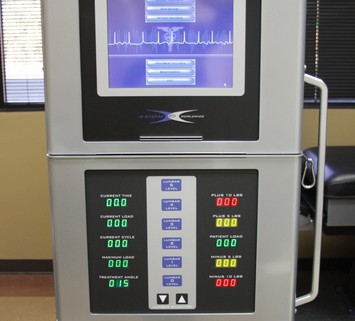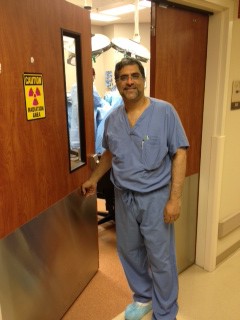There are various types of minimally invasive spine surgery that are available as alternatives to traditional spinal surgeries while offering equal results with less overall burden on the patient. These surgeries are performed using smaller incisions than traditional spinal surgeries, reducing risks of infection and blood loss and ultimately leading to faster recovery times. Although there are several ways in which minimally invasive spine surgery can be performed, they all share a common goal—either decompression or stabilization of the spine.
What Is the Success Rate of Minimally Invasive Spine Surgery?
Minimally invasive spinal surgeries are just as effective as their traditional counterparts, yet they pose a greatly reduced risk in comparison. Still, there are a few complications that may occur alongside any spinal surgery, all of which should be taken into account before deciding whether or not any type of spinal surgery is right for you. Such complications may include:
-
Damage to the nervous system
-
Loss of blood
-
Blood clotting
-
Pseudarthrosis, or failed fusion, wherein the spine doesn't heal after fusion
-
Risk of infection
What Are the Different Types of Spine Surgery?
There are many minimally invasive spine surgery treatment options for those with various types of spinal disorders. These different types of spine surgery include:
-
Discectomy- used to treat a pinched spinal nerve caused by a herniated disc
-
Foraminotomy- reduces compression in the area where your nerve roots exit the spinal canal
-
Laminectomy- a procedure involving the removal of the lamina to relieve pressure, often used to treat spinal stenosis
-
Spinal Fusion- the fusing together of two parts of the spine with the use of a bone graft, used for many spinal disorders
-
Spinal Instrumentation- braces for the spine that help correct alignment issues
-
Corpectomy- a procedure involving the removal of either part or all of a vertebra to relieve a pinched spinal nerve
-
Kyphoplasty- involves the insertion of a balloon into the spine to help it heal into form
These are just a few different types of minimally invasive spine surgery. Minimally invasive spine surgery can also treat herniated discs, scoliosis, spinal stenosis, degenerative disc disease, and many other spinal disorders. The benefits associated with minimally invasive spine surgery is typically equal to traditional spine surgery, but with the added benefit of greatly diminished risk of complications. This reduction in risk is due to the minimal amount and size of incisions made during the procedure. In addition to reducing the risk of complications, minimally invasive spine surgery has a greater recovery rate with faster recovery times.
How Long Does It Take to Recover from Minimally Invasive Spine Surgery?
One of the best things about minimally invasive spine surgery is that it can oftentimes be performed as an "outpatient procedure," meaning that the patient can go home the same day the surgery is performed. Of course, this doesn't mean the procedure won't occupy the majority of the day, but patients are generally able to return home much more quickly than patients undergoing traditional spine surgery.
Faster Recovery Rates Than Traditional Spine Surgeries
Even patients who are not able to have the surgery performed as an outpatient procedure are generally able to return home more quickly than those receiving traditional surgical methods. Patients may have to stay a couple of days at the hospital for routine monitoring, but they will typically be feeling as good as new fairly quickly, especially in comparison to the recovery time associated with traditional surgical techniques.
Pain Management and Physical Therapy
There is always going to be residual pain after any surgical procedure, and minimally invasive spine surgeries generally follow a similar pain-management regimen as other minimally invasive surgeries. Patients may even be able to use either over-the-counter or prescription pain medications since the reduction in soft tissues damaged during surgery decreases postoperative pain.
Specific healing times can vary from patient to patient depending on the type of surgery they receive. The doctor will provide specific instructions as to what activities you should avoid after undergoing minimally invasive spine surgery to guarantee the same speedy recovery that has become the standard with these improved procedures. Oftentimes, physical therapy is recommended after spine surgery to aid in a speedy and safe rehabilitation process, with higher overall success post-recovery. When all goes well, those who receive minimally invasive spinal surgeries should be feeling stronger within just a few weeks.
How Is Minimally Invasive Spine Surgery Done?
As compared to traditional (or open) spine surgery, minimally invasive spine surgery typically only involves procedures that are referred to as "percutaneous" and "mini-open" procedures. A "percutaneous" procedure is a procedure that is performed entirely through the skin, and a "mini-open" procedure is a procedure that involves only very small open incisions. In these procedures, the traditional need for cutting into soft tissue is replaced with tubular retractors, a tool that creates a sort of tunnel through the muscles and allows the doctor unprecedented access to the spine. Endoscopes and other surgical imaging systems can also be utilized to grant the surgeon their required view of the surgery.
Minimally Invasive Spine Surgeries Use Tubular Retractors to Reduce Incisions
As with any other type of spine surgery, minimally invasive spine surgery is performed by a licensed orthopedic surgeon with the help of a trained medical team. While the specific details of the surgery will be different depending on the procedure, they typically follow a similar pattern that involves the administration of an anesthetic, careful monitoring of vital signs, antibiotics, surgical imaging, and tubular retractors. Small tools are passed through the tubular retractors to perform the surgery, and once the surgeon has corrected the issue, the incision is then closed with either staples, glue, or stitches.
What Happens After Minimally Invasive Spine Surgery?
After the surgery, the patient may either be able to go home within a few hours or be required to stay one or more nights in the hospital for monitoring. When it is time to go home, the doctor will outline specific instructions for rehabilitation, oftentimes requiring physical therapy and, in some cases, the use of a brace. Patients will typically need to be driven home after being released due to the residual effects of undergoing surgery combined with the effects of both anesthesia and painkillers.
Minimally Invasive Spine Surgery May Be the Answer for You!
Although minimally invasive spine surgery is still not for everyone, it does present a much more accessible treatment option for individuals with spinal disorders who don't want to face the risk associated with traditional spine surgeries. Though the outcomes of these different surgical methods can be equal in success-level, the risk is typically reduced by a wide margin in patients for whom the minimally invasive procedure is a viable option. Texas Spine Center can help if you are still curious about the different types of minimally invasive spine surgery and want to know which surgical option may be the answer for you, contact us today.



